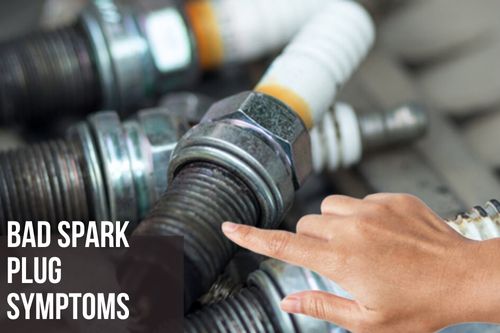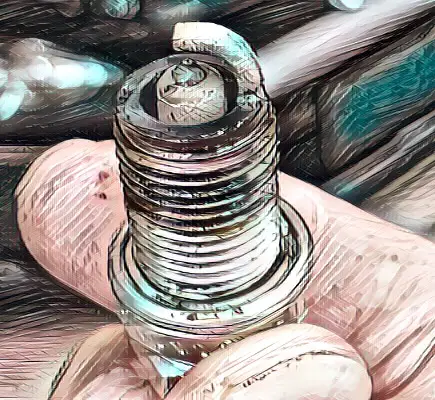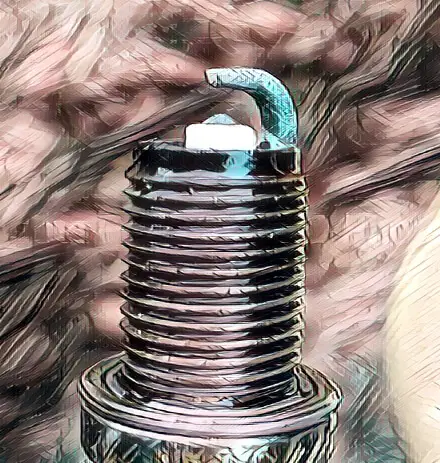Identifying bad spark plug symptoms in your chainsaw can help you diagnose problems faster and perform maintenance more efficiently. When you know what to look for, you can save money from having to have a professional do it for you and potentially get your chainsaw back in working condition faster.

A faulty spark plug can cause a number of problems with your chainsaw, so getting familiar with what to look for is key in diagnosing any issues.
Let’s discuss what these symptoms may look like so you can be better prepared when it comes to maintaining your chainsaw.
Signs You May Have a Bad Spark Plug
If your chainsaw isn’t running as well as it used to, there’s a good chance that a bad spark plug may be the culprit.

Below are some of the common bad spark plug symptoms to look out for in your chainsaw:
- Your engine won’t start or has trouble starting up
- It runs unevenly or stalls out frequently
- The exhaust smoke is unusually dark or smells different than usual
- The engine runs too hot or too cold
- There is an excessive amount of fuel being used
If you notice any of these signs, then it might be time to check on the condition of your spark plug first. This can be done by removing the spark plug and inspecting it for any damage. If you notice signs of wear or damage, then it may be time to replace your spark plug with a new one.
Identifying Bad Spark Plug Symptoms
Here are some tips on how to identify bad spark plug symptoms in your saw.
1. Inspect the spark plugs regularly for any signs of wear or damage. This can include things like cracked electrodes, rusty plugs, or carbon buildup on the electrodes.
2. Listen closely to how your engine is running, paying attention to any signs of unevenness or stalling out. If you notice these symptoms, they may be an indication that your spark plug needs replacing.
3. Pay attention to how much fuel your chainsaw consumes. If you notice that it’s using an excessive amount of fuel or if the exhaust smoke is particularly dark or smells different, these can be signs of a bad spark plug and may require replacing.
If you are unsure how to proceed, then consider consulting with a professional or your local dealer to get expert advice on how to properly maintain and diagnose any issues related to your spark plug.
How To Replace Your Spark Plug
If after checking for these signs you have figured that your spark plug needs replacing, here are some steps to help get it done safely and easily:

- Start by removing the air filter cover on your chainsaw and locate the spark plug – make sure to unplug or remove the battery if necessary
- Using a socket wrench and the correct size socket (usually 14mm), unscrew and remove the old spark plug
- Check the gap distance between electrodes on the new spark plug (the gap should be 0.025 inches)
- Apply anti-seize compound around threads on the new spark plug before inserting it into the cylinder head
- Tighten securely using a socket wrench
- After replacing it, run the engine briefly without load – this allows the combustion chamber temperature to rise and seat new sealant properly
- Reinstall the air filter cover and ensure all connections are secure before using your chainsaw again
Following these steps should help you successfully replace a bad spark plug in your chainsaw, allowing you to get back to using it as normal. When done properly, this simple maintenance task can help keep your chainsaw running smoothly for years to come.
Remember that regular maintenance and care are key when it comes to keeping your chainsaw in good working condition. Whether you are a professional or a DIYer, it’s important to stay on top of any issues that may arise with your tools, and a bad spark plug is no exception.
With the right tools and a little bit of know-how, you can quickly and easily replace your chainsaw’s spark plug and get back to cutting with confidence.
Final Thoughts
A faulty or worn-out spark plug can cause serious issues with your chainsaw – from not starting at all to inefficient performance during use.
Knowing how to diagnose bad spark plug symptoms in a chainsaw will save time and money down the road. Whether you are a professional or DIYer, it’s important to stay on top of any issues that may arise with your tools and make sure you know how to properly replace a bad spark plug in your chainsaw.
Being prepared with basic knowledge on how to replace it yourself can help get you up and running again quickly. If at any point you feel uncomfortable doing so make sure you consult an expert for help.

